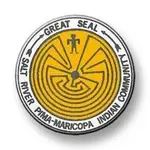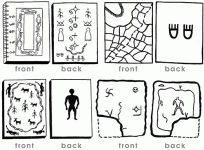Springfield
Silver Member
- Joined
- Apr 19, 2003
- Messages
- 2,850
- Reaction score
- 1,388
- Golden Thread
- 0
- Location
- New Mexico
- Detector(s) used
- BS
Well, somehiker, the labyrinth carving you posted has been found in a number of places around the world and 'seems' to be the inspiration for the Native American 'Man in the Maze' designs that appear on various Southwest jewelry pieces, beltbuckles, baskets, etc.
The design is associated with ancient Crete and is said to represent the labyrinth beneath King Minos' palace - you know, the place where that badass Minotaur was kept. Many old Greek coins display the maze on one side. So, the question that comes to my mind is not so much that the carving was created by ancient visitors from across the globe (but is an intriguing idea not to be dismissed), but that it possibly represents a reference to some underground tunnel(s). Another thing to consider is the symbol's link to the Hopi cosmology, which is rife with references to the underworld, 'ant people', etc. Of course, any treasure hunter worth his salt will focus on the underground tunnel thingy, maybe rightfully so. It would be interesting to hear more about your find - it's a good 'un.
The design is associated with ancient Crete and is said to represent the labyrinth beneath King Minos' palace - you know, the place where that badass Minotaur was kept. Many old Greek coins display the maze on one side. So, the question that comes to my mind is not so much that the carving was created by ancient visitors from across the globe (but is an intriguing idea not to be dismissed), but that it possibly represents a reference to some underground tunnel(s). Another thing to consider is the symbol's link to the Hopi cosmology, which is rife with references to the underworld, 'ant people', etc. Of course, any treasure hunter worth his salt will focus on the underground tunnel thingy, maybe rightfully so. It would be interesting to hear more about your find - it's a good 'un.










